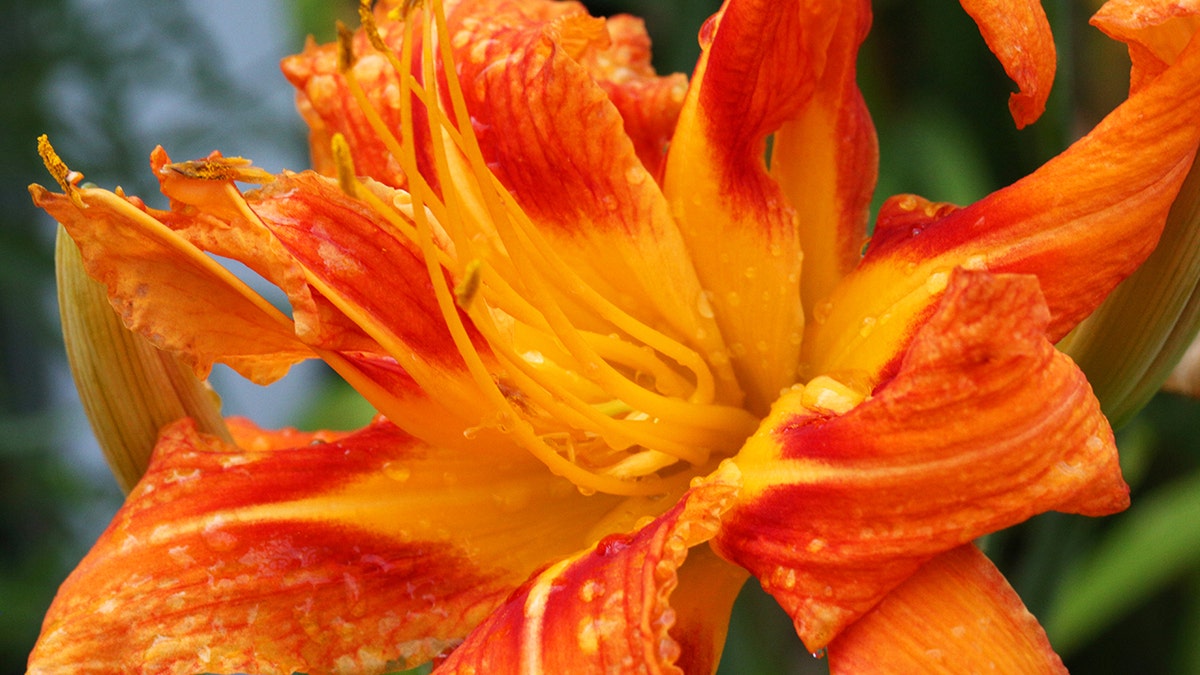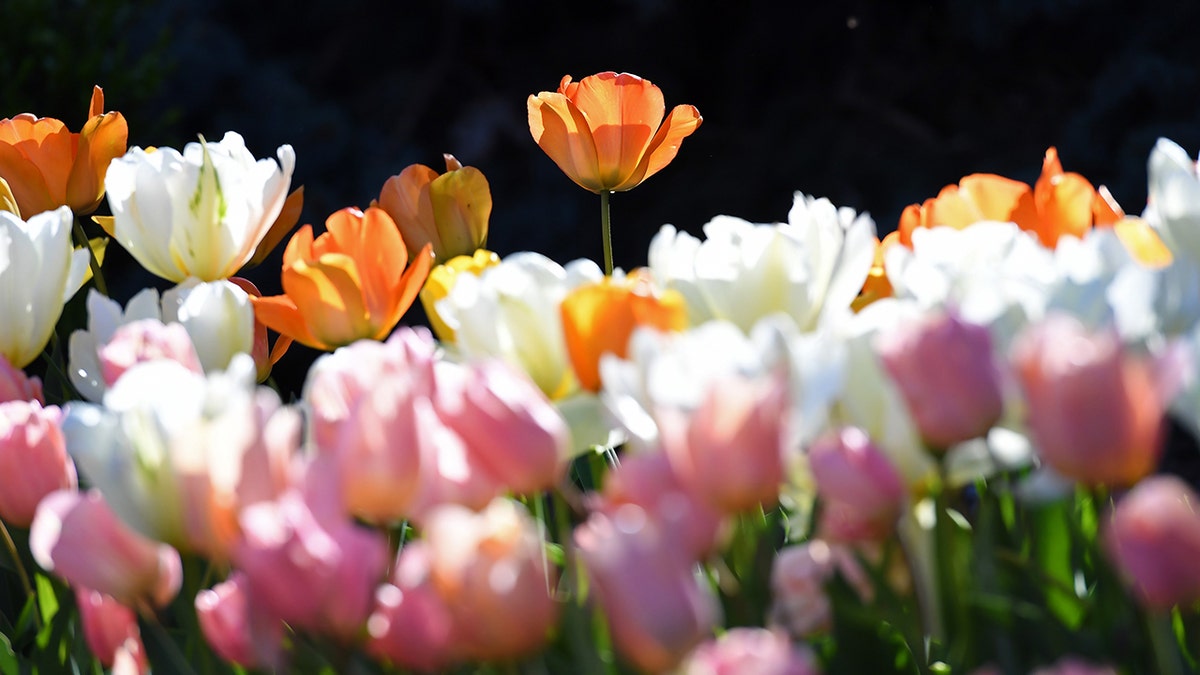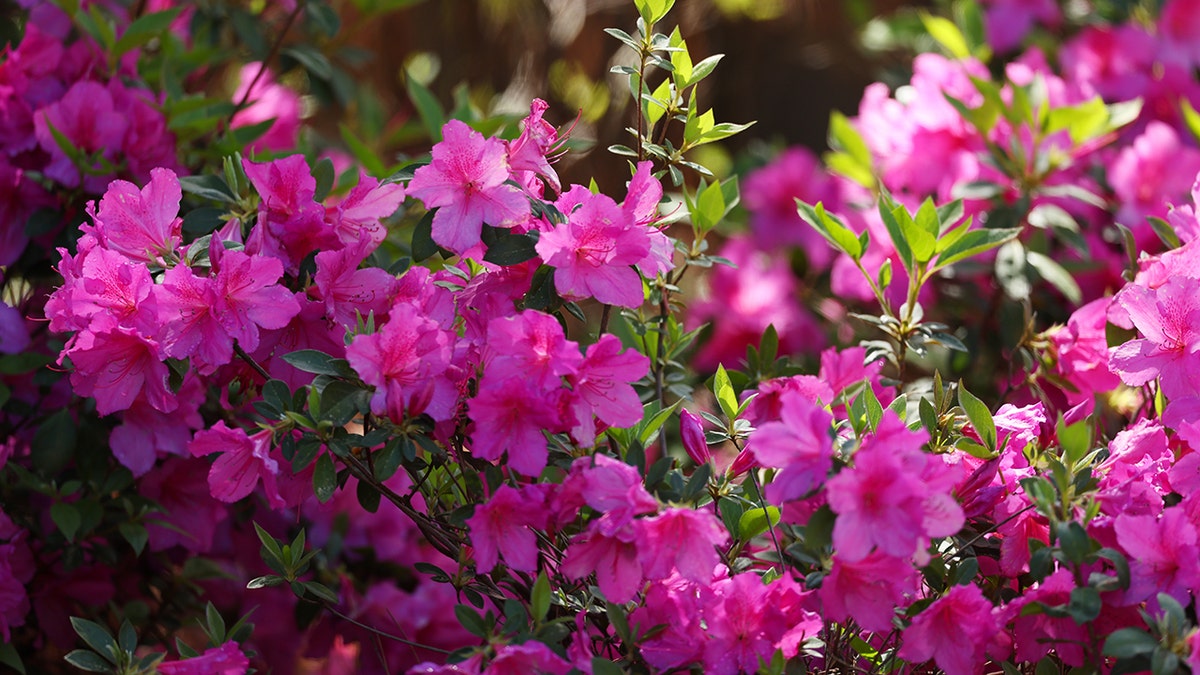Why cats make great companion pets, according to the ASPCA
ASPCA Senior Behavior Manager Adi Hovav joins 'Fox & Friends Weekend' to explain the benefits of adopting kittens.
If you have a pet living with you, you'll want to be extremely cautious of plants you have growing both inside and outside your home, as they can be toxic to your furry friends.
Plants can add vibrant color and a sense of nature to a space, while simultaneously providing a peaceful, calming feeling.
Especially during spring and summer months, blooming plants are an appealing feature for the yard.
OBESITY CAN BE DANGEROUS FOR DOGS, EXPERTS WARN — HERE'S HOW TO HELP YOUR PUDGY PUP LOSE WEIGHT
Many individuals choose to decorate their indoor space with flowers as well.
Before buying a plant, do proper research to ensure it won't potentially cause harm to your pet.

There are many plants that are extremely toxic to pets. Before planting outside or purchasing a household plant for your home, do research and be sure it's safe for your pet. (Bruce Bennett/Getty Images; FlowerPhotos/Universal Images Group via Getty Images)
These eight are just a few of the many plants that are extremely dangerous for pets.
1. Lily
Lilies are a colorful flower that bloom throughout the summer, but they can be dangerous for cats.
Small amounts of the plant ingested by a cat can cause severe kidney damage, according to the ASPCA.
All parts of the plant are poisonous to cats, including the pollen, according to WebMD.

Lilies are extremely dangerous for cats. (Creative Touch Imaging Ltd./NurPhoto via Getty Images)
2. Sago palm
A sago palm is a popular plant to have in the house — but if pets get into it, the results could be very harmful indeed.
10 SMART DEVICES THAT MAKE PET PARENTING EASIER
All parts of a sago palm can cause danger to pets, but the ASPCA notes the seeds are highly dangerous as they contain the most toxins.
One to two seeds eaten by a pet could cause vomiting, increased thirst, bruising, liver damage, liver failure and death, according to the source.
3. Tulip
Tulip farms thrive in warmer months, with many people picking their own colorful flowers to display in their homes. However, if you have pets, beware.
Tulips, especially their bulbs, can be dangerous.
The bulb of a tulip contains the highest number of toxins. Signs you may see if your furry friend has ingested a tulip bulb are vomiting, depression, diarrhea and hypersalivation, according to the ASPCA.

Picking tulips is a popular activity as the flowers start to bloom. If you have pets, do not put tulips within their reach. (Li Rui/Xinhua via Getty Images)
If you do have tulips on display in your home, make sure to put them in a spot far out of reach from your pets.
4. Azalea
Azaleas are very popular among landscapers as they are very colorful.
HOT SUMMER SAFETY: HOW TO KEEP YOUR PETS HEALTHY IN EXTREME TEMPERATURES THIS SEASON
However, these shrubs, which typically pop up in the spring and early summer, should be avoided if you have pets.

Azaleas can cause lots of symptoms in pets that can be fatal to their health. If they ingest the flower, make sure to take them to the vet immediately for proper care. (Andrew Redington/Getty Images)
Azaleas can cause vomiting, diarrhea, weakness and cardiac failure in dogs and cats, according to the ASPCA.
5. Kalanchoe
Kalanchoe is a tropical plant that is popular in households, with around 125 different species.
Yellow, orange, pink and red are all colors you can find the plant blossoming in.
For pets, ingestion of the plant can cause vomiting, diarrhea and abnormal heart rhythm, according to the ASPCA.
6. Schefflera
Schefflera is a tropical plant that thrives during the summer months, adding a touch of greenery to wherever these plants are placed.
Unfortunately, schefflera and pets do not make a good combination.
The plants can cause a large range of dangerous symptoms for pets, including oral irritation, intense burning and irritation of the mouth, lips, tongue, excessive drooling, vomiting and difficulty swallowing, according to the ASPCA.
7. Oleander
Beginning in the summer months, oleanders can start to appear in your yard.
They grow quickly and require little care.

Oleander is a poisonous flower you'll want to keep away from your pets. (Viola Lopes/picture alliance via Getty Images)
You should beware of oleander if you have pets, as they are highly toxic to them and can cause drooling, abdominal pain, diarrhea, colic, depression and even death, according to the ASPCA.
CLICK HERE TO SIGN UP FOR OUR LIFESTYLE NEWSLETTER
8. Chrysanthemum
Late summer is the most well-known time of the year for chrysanthemums to bloom.
The plants, also known as mums, are a very popular, very colorful flower — but not for pet owners.
The ASPCA notes vomiting, diarrhea, hypersalivation, incoordination and dermatitis as clinical signs of a pet ingesting chrysanthemum.
What to do if your pet ingests a toxic plant
These are just a few of the many plants that are toxic to pets.
A full list is outlined by the ASPCA on the organization's website.
CLICK HERE TO GET THE FOX NEWS APP
If you have witnessed your pet ingest a plant, or if they pet starts displaying common systems, it's important to contact your veterinarian or an emergency clinic immediately to get your animals the help they need as soon as possible.
If you're looking for fast-growing, dog-friendly, non-poisonous plants to put outside in your yard, sunflowers, magnolia bushes and snapdragons are a few of the colorful options, according to Rover.com.
For more Lifestyle articles, visit www.foxnews.com/lifestyle.

























